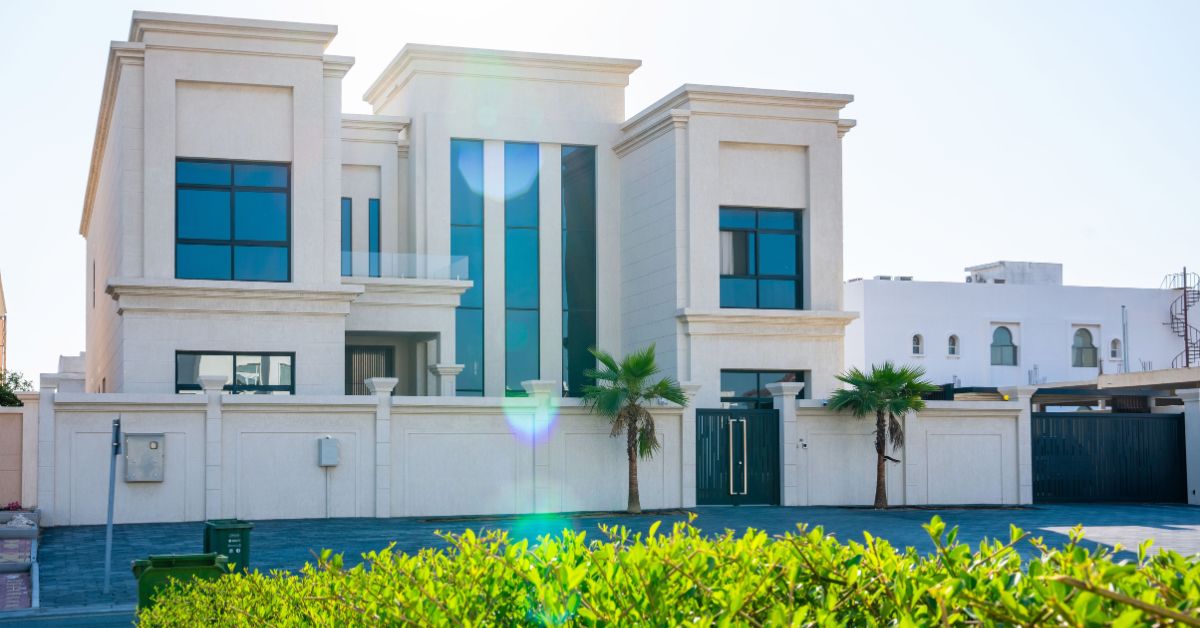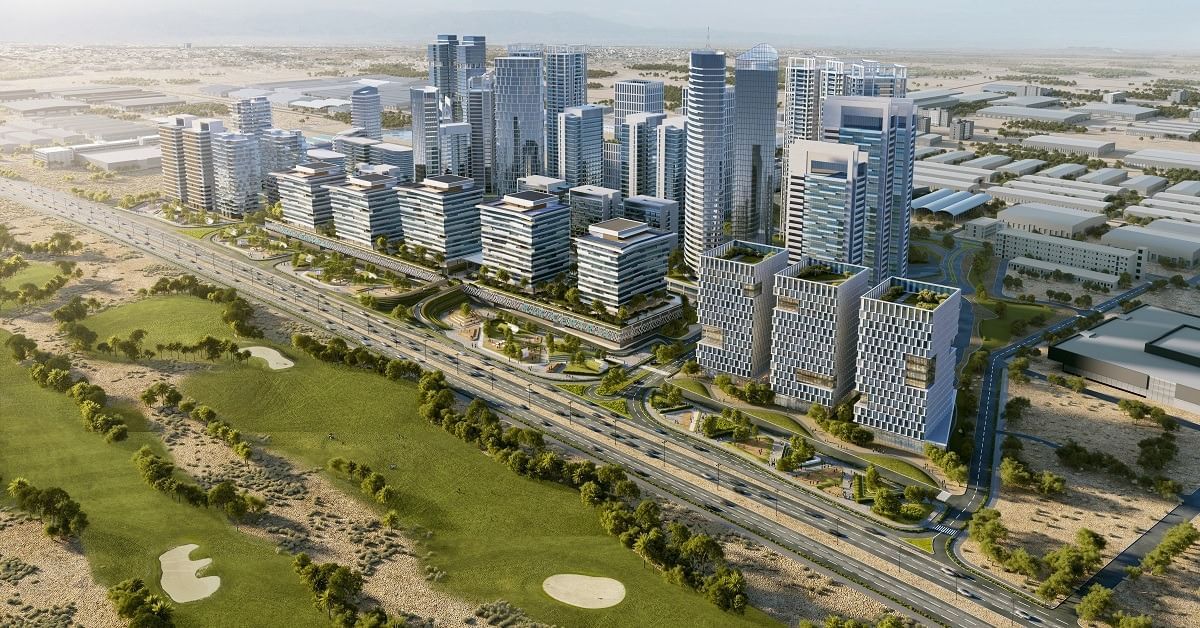DUBAI — The built environment, which includes buildings and infrastructure, plays a significant role in global carbon emissions. Recognizing this, countries worldwide are actively pursuing strategies to decarbonize this sector. The GCC, with its ambitious sustainability goals and growing urban development, presents a unique case study in this ongoing effort.
However, with rapid urbanization and economic development comes a pressing need to address the built environment’s environmental footprint. Decarbonization, the process of reducing carbon emissions, has emerged as a crucial goal globally, and the GCC countries are no exception.
Sustainable Urban Planning
Sustainable urban planning is at the heart of decarbonization efforts. GCC countries are increasingly focusing on creating compact, mixed-use developments that promote walkability, reduce reliance on automobiles, and minimize energy consumption. This involves designing neighborhoods where residential areas, commercial spaces, and amenities are close by, thus encouraging pedestrian movement and reducing the need for vehicle transport.
Additionally, incorporating green spaces and public transportation infrastructure further contributes to a greener urban landscape.
Energy-Efficient Buildings
Buildings account for a significant portion of carbon emissions globally, and the GCC is no exception, especially given the region’s harsh climate that necessitates extensive energy usage for cooling.
However, advancements in building design and technology offer promising solutions. Passive design strategies can significantly reduce energy consumption by orienting buildings to optimize natural light and ventilation while minimizing solar heat gain.
Furthermore, integrating energy-efficient materials, insulation, and glazing systems can enhance thermal performance, thus lowering the demand for mechanical cooling systems.
“Energy-efficient infrastructure plays a pivotal role in advancing decarbonization objectives by mitigating energy consumption and associated emissions. Yet, to effectively quantify these contributions and assign value to them, it is imperative to implement robust measurement mechanisms. Such measurements enable a comprehensive understanding of the extent of these contributions, thereby facilitating optimization efforts where feasible,” Senna Sabir, Senior Manager of Sustainable Design, and Manal Shawish, Manager of Sustainability Advisory, Middle East at AtkinsRéalis highlighted this in an exclusive interview with TRENDS.
Renewable Energy Integration
Harnessing the abundant solar energy in the GCC region presents a tremendous opportunity for decarbonization. Photovoltaic (PV) systems integrated into building facades or rooftops can generate clean electricity to power residential and commercial developments.
Moreover, concentrated solar power (CSP) plants can be deployed to supply renewable energy to entire communities, further reducing reliance on fossil fuels. Coupled with energy storage technologies, such as batteries, these renewable energy solutions offer a reliable and sustainable alternative to traditional power sources.
Current Decarbonization Initiatives
According to Senna Sabir, the GCC is witnessing a surge in innovative city initiatives.
In an interview with TRENDS, they elaborated, “Smart City concepts are increasingly integrated into urban planning, optimizing resource use, reducing congestion, and enhancing the quality of life. Elements such as smart infrastructure, more efficient public transportation, and the introduction of green spaces within cities all contribute to this transformative process in the region.”
Another key trend is the adoption of renewable energy in urban development. This includes installing solar panels on buildings, harnessing wind power, and designing net-zero energy buildings. Additionally, the use of low-carbon building materials and renewable energy technologies is increasingly prioritized in urban planning. A prime example is the DEWA headquarters in Dubai, Al Shera’a, which is set to become the world’s most significant net-zero carbon emission “smart” government building.
National Targets and Green Building Practices
Many GCC countries have established net-zero targets as part of their national visions, such as Saudi Vision 2030 and UAE Vision 2031. These visions drive regional decarbonization efforts, alongside specific targets for renewable energy and sectoral emission reductions.
Additionally, green building certifications like Abu Dhabi’s Estidama Pearl Rating System and the Dubai Green Building Regulations are crucial in promoting sustainable construction practices.
“From an infrastructure perspective, we’re implementing nature-based solutions for outdoor spaces that focus on shade, wind, and solar opportunities,” they noted. Green infrastructure and systems are also applied in spaces that might not necessarily yield the same return on investment as a building but significantly improve the quality of life and contribute to decarbonizing the built environment,” they said.
They explain, “We’ve seen a significant shift and growing appreciation for high-performance buildings, in terms of their envelopes (the physical separator between the indoor and outdoor environments) and their HVAC (heating, ventilation, and air conditioning) systems. This includes focusing on the end user’s comfort and well-being and aiming to decarbonize the process.”
Traditional construction methods in the region still rely heavily on concrete, a carbon-intensive and labor-intensive material. This is detrimental to the region’s built infrastructure.
A sea change is required for the building sector to decarbonize. According to Sabir, critical pillars for the industry’s future include digital transformation, the adoption of modern construction methods (MMC), and research into new materials.
Challenges and Collaboration
The region faces challenges in decarbonization, including its high dependence on fossil fuels and water scarcity. However, progress is evident, with COP28 witnessing agreements to accelerate the adoption of “15-minute cities” and double the share of energy-efficient and fossil-free transportation by 2030.
Water scarcity is a pressing issue in the GCC’s arid climate, and addressing it is integral to sustainable development. Water-efficient design strategies, such as graywater recycling systems, low-flow fixtures, and native landscaping, can significantly reduce water consumption in buildings and landscapes.
Additionally, implementing innovative techniques like rainwater harvesting and wastewater treatment for non-potable uses mitigates the strain on freshwater resources, contributing to decarbonization and water conservation efforts.
At the same time, the UAE unveiled an Integrated Emission Quantification Tool (IEQT) to track emissions and mitigation efforts, while Saudi Arabia’s Public Investment Fund committed to achieving net-zero emissions by 2050.
Green Building Certification
To incentivize and recognize sustainable building practices, green building certification systems, such as LEED (Leadership in Energy and Environmental Design) and the Estidama Pearl Rating System, are gaining traction in the GCC. These frameworks assess various aspects of a building’s sustainability, including energy efficiency, water conservation, indoor environmental quality, and material selection.
By adhering to green building standards, developers can reduce carbon emissions and enhance the long-term operational efficiency and occupant comfort of their projects.

Future Trends and Innovations
Looking ahead, several trends are expected to shape the future of decarbonization in the GCC. There will be an increased focus on monitoring and optimizing energy consumption, especially in existing buildings.
Secondly, more green finance and investment in the private sector will emerge, with incentives such as lower mortgage rates for sustainable properties.
Thirdly, carbon pricing mechanisms like carbon taxes and trading schemes will be implemented to encourage emission reductions.
Fourthly, advances in building materials will include eco-certified materials, zero-emission cement, and improved insulation technologies. Finally, enhanced urban planning will focus on mixed-use developments and rail-friendly neighborhoods.
The GCC region is significantly transforming its approach to the built environment. By embracing innovation, collaboration, and a commitment to sustainability, the region can set an example for other developing economies and contribute meaningfully to global decarbonization efforts.







